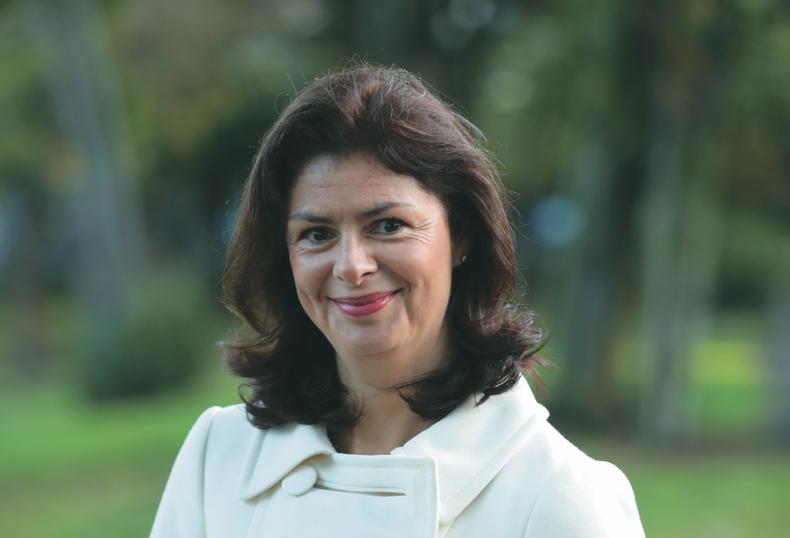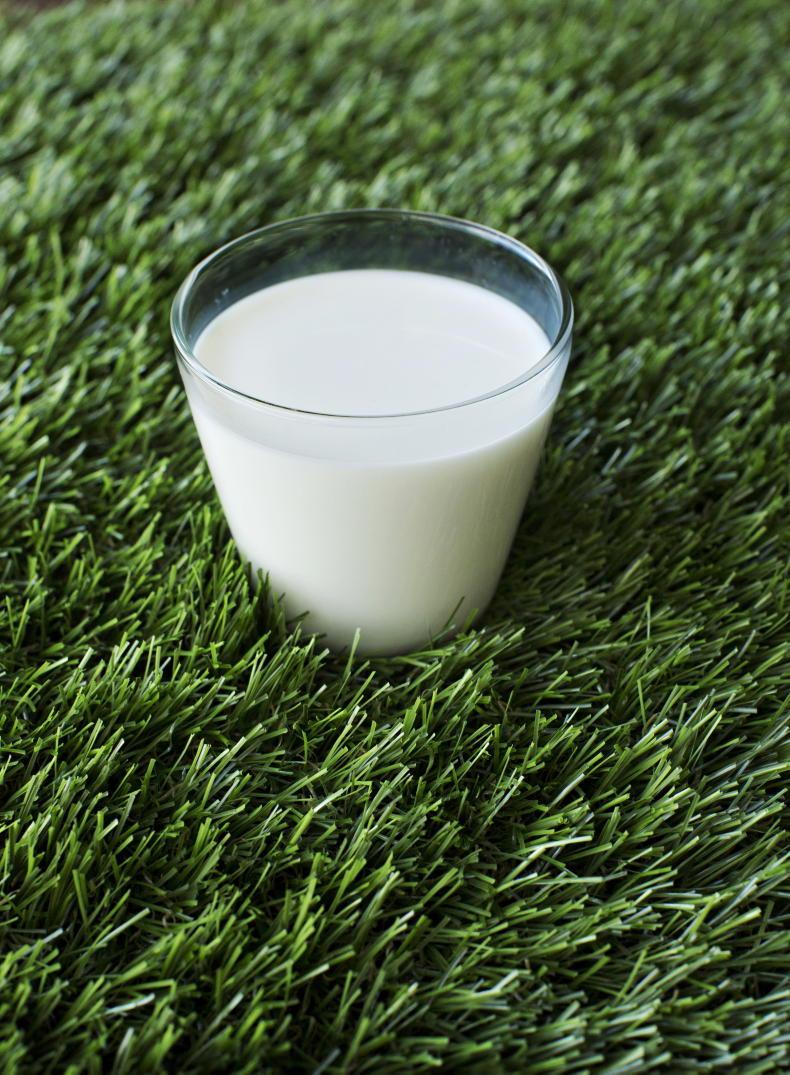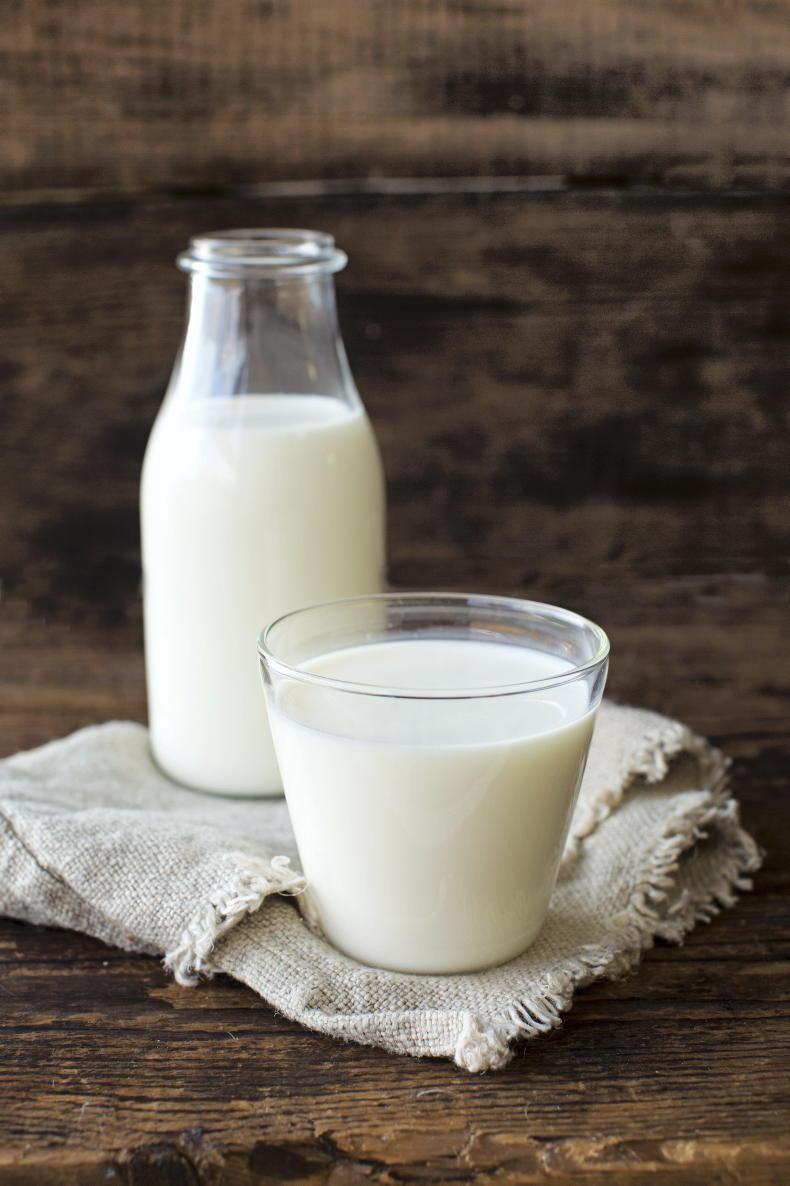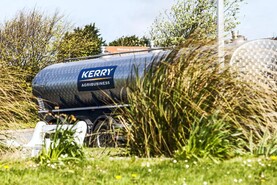A baked potato smothered in cheddar cheese, a creamy fish pie, a fruity yoghurt as an afternoon break and milk in all its glory – cold, creamy and refreshing. All make the mouth water. The past year has seen many of us reach for our favourite foods to help us persevere through months of lockdown and the latest research from the National Dairy Council (NDC) proves dairy is high up on our list.
Four in 10 people increased their consumption of dairy during the COVID-19 pandemic and this was really prevalent in the under 35s category.
Milk was key in this and Irish households are consuming more milk overall, compared to a similar study in 2018. And it is whole milk that people are drinking more of rather than added milk, part of the trend towards “back to basics”.
Cheese please
Just one in 10 people say they adhere to a dairy-free diet but this statistic may be a little inflated. Zoe Kavanagh, CEO of the National Dairy Council explains.
“Sometimes when people hear ‘dairy’, they just think of milk so when we were talking to the under 35s cohort, about 10% said they were pursuing a dairy-free diet, which sounds really high. However, when we probed them and asked about cheese for example, many were saying, ‘Oh I couldn’t give up my cheese. I’m not using milk in my coffee, but I still love my cheese.’”

Zoe Kavanagh of the NDC.
Other positives from the study shows that eight in 10 people believe that Irish dairy produce is superior to dairy from elsewhere and seven in 10 people say milk is part of a healthy modern lifestyle.
Environmental noise
This is all positive news. This is good for the consumer, good for the farmer, good for the dairy industry. However, while dairy is enjoying its day in the sun, there is a dark cloud looming on the horizon. Environmental noise may be the next big barrier to dairy consumption. Zoe explains why as well as how they plan to tackle it.
“Our research focused on two elements – the product and the production. Milk as a product is doing exceptionally well, as the statistics prove. And these statistics are substantial, we ran two studies, one encompassing 1,800 consumers of all ages, and another of 360 people under 35.
“People believe Irish dairy is superior to anywhere else in the world, they are consuming it for health reasons, they acknowledge that by buying Irish dairy, they are supporting local. There is a lot of trust in dairy as a product. The question marks arise however when it comes to production.
“Our research doesn’t just ask about their consumption, we ask questions about trust in dairy farmers and we got a 35% negative scoring. This is compared to a 25% negative scoring in 2017. And what does it come down to? The environment.”
Climate anxiety
Zoe continues: “This result wasn’t entirely surprising. Even before the COVID pandemic, we could see the beginning of this questioning. There is a lot of noise out there. The EAT-Lancet study for example, got a lot of coverage globally when they challenged if meat and dairy should be included in the healthy eating guidelines.
“And in parallel we are seeing climate anxiety building amongst consumers. The impact on the environment and climate control really matters to people and it’s becoming more and more important.”
This means there is a big body of work ahead of the NDC around the production system of dairy.
“We need to educate consumers about the Irish production system of dairy, taking them through the long-term sustainable work that farmers are doing. As a consumer facing body, we have been successful on educating consumers about dairy as a product. Now we need to take that model and apply it to educating consumers on the production system.”
Long-term project
It’s not going to be an easy job. Zoe says: “It’s technical information, assuming a level of understanding about farming. 
The conversations we have with the dairy sector are intellectual and specific. We could be talking about Teagasc and the marginal abatement cost (MAC) curve, using language like nutrient management plans, low-emission slurry spreading, grass growth, soil pH and the nitrates directive. To farmers and those within the industry, these are everyday terms but to some consumers, this could be like a foreign language. We need to make it relevant for the consumer, package it into a dialogue that they can relate to and understand.”
For example, one analogy they are looking at is gardening. “A lot of consumers understand gardening. Most people in their garden don’t want to use a lot of herbicides and pesticides, they want to capture the rainwater and use that for plants. They know the importance of good healthy grass growth. There is even a focus on biodiversity, attracting more bees into your garden with flowers.
“Without diminishing the technology and smart action within the dairy industry, an analogy like that helps to bring the consumer on a journey.”
Our starting point
The starting point will be to communicate that, when it comes to dairy, Irish production systems produce half of the global emissions average.

Zoe adds: “We want to tell them it’s going to get even better than that and here’s how we’re going to do it. And in doing that, rather than the NDC always being the voice, we are in the process of recruiting dairy ambassadors around the country to also communicate with consumers, reassure them.
“Because to be honest, what the consumer is mostly hearing is the negatives, that Irish agriculture is playing a part in environmental pressures, that we’re going to miss our emission targets because of agriculture. We need to break that down and reassure them this is a responsible progressive sector.”
“It’s not going to be an easy fix, it is going to take a long time but there are lots of things that farmers can and are doing with advances in technology and the management of natural resources. We are going to have to be a more open sector, so people know this work is being done. Maybe it means letting people into dairy farms to see the work for themselves, agritourism will play a role. We need to stay connected with the consumer.”
A baked potato smothered in cheddar cheese, a creamy fish pie, a fruity yoghurt as an afternoon break and milk in all its glory – cold, creamy and refreshing. All make the mouth water. The past year has seen many of us reach for our favourite foods to help us persevere through months of lockdown and the latest research from the National Dairy Council (NDC) proves dairy is high up on our list.
Four in 10 people increased their consumption of dairy during the COVID-19 pandemic and this was really prevalent in the under 35s category.
Milk was key in this and Irish households are consuming more milk overall, compared to a similar study in 2018. And it is whole milk that people are drinking more of rather than added milk, part of the trend towards “back to basics”.
Cheese please
Just one in 10 people say they adhere to a dairy-free diet but this statistic may be a little inflated. Zoe Kavanagh, CEO of the National Dairy Council explains.
“Sometimes when people hear ‘dairy’, they just think of milk so when we were talking to the under 35s cohort, about 10% said they were pursuing a dairy-free diet, which sounds really high. However, when we probed them and asked about cheese for example, many were saying, ‘Oh I couldn’t give up my cheese. I’m not using milk in my coffee, but I still love my cheese.’”

Zoe Kavanagh of the NDC.
Other positives from the study shows that eight in 10 people believe that Irish dairy produce is superior to dairy from elsewhere and seven in 10 people say milk is part of a healthy modern lifestyle.
Environmental noise
This is all positive news. This is good for the consumer, good for the farmer, good for the dairy industry. However, while dairy is enjoying its day in the sun, there is a dark cloud looming on the horizon. Environmental noise may be the next big barrier to dairy consumption. Zoe explains why as well as how they plan to tackle it.
“Our research focused on two elements – the product and the production. Milk as a product is doing exceptionally well, as the statistics prove. And these statistics are substantial, we ran two studies, one encompassing 1,800 consumers of all ages, and another of 360 people under 35.
“People believe Irish dairy is superior to anywhere else in the world, they are consuming it for health reasons, they acknowledge that by buying Irish dairy, they are supporting local. There is a lot of trust in dairy as a product. The question marks arise however when it comes to production.
“Our research doesn’t just ask about their consumption, we ask questions about trust in dairy farmers and we got a 35% negative scoring. This is compared to a 25% negative scoring in 2017. And what does it come down to? The environment.”
Climate anxiety
Zoe continues: “This result wasn’t entirely surprising. Even before the COVID pandemic, we could see the beginning of this questioning. There is a lot of noise out there. The EAT-Lancet study for example, got a lot of coverage globally when they challenged if meat and dairy should be included in the healthy eating guidelines.
“And in parallel we are seeing climate anxiety building amongst consumers. The impact on the environment and climate control really matters to people and it’s becoming more and more important.”
This means there is a big body of work ahead of the NDC around the production system of dairy.
“We need to educate consumers about the Irish production system of dairy, taking them through the long-term sustainable work that farmers are doing. As a consumer facing body, we have been successful on educating consumers about dairy as a product. Now we need to take that model and apply it to educating consumers on the production system.”
Long-term project
It’s not going to be an easy job. Zoe says: “It’s technical information, assuming a level of understanding about farming. 
The conversations we have with the dairy sector are intellectual and specific. We could be talking about Teagasc and the marginal abatement cost (MAC) curve, using language like nutrient management plans, low-emission slurry spreading, grass growth, soil pH and the nitrates directive. To farmers and those within the industry, these are everyday terms but to some consumers, this could be like a foreign language. We need to make it relevant for the consumer, package it into a dialogue that they can relate to and understand.”
For example, one analogy they are looking at is gardening. “A lot of consumers understand gardening. Most people in their garden don’t want to use a lot of herbicides and pesticides, they want to capture the rainwater and use that for plants. They know the importance of good healthy grass growth. There is even a focus on biodiversity, attracting more bees into your garden with flowers.
“Without diminishing the technology and smart action within the dairy industry, an analogy like that helps to bring the consumer on a journey.”
Our starting point
The starting point will be to communicate that, when it comes to dairy, Irish production systems produce half of the global emissions average.

Zoe adds: “We want to tell them it’s going to get even better than that and here’s how we’re going to do it. And in doing that, rather than the NDC always being the voice, we are in the process of recruiting dairy ambassadors around the country to also communicate with consumers, reassure them.
“Because to be honest, what the consumer is mostly hearing is the negatives, that Irish agriculture is playing a part in environmental pressures, that we’re going to miss our emission targets because of agriculture. We need to break that down and reassure them this is a responsible progressive sector.”
“It’s not going to be an easy fix, it is going to take a long time but there are lots of things that farmers can and are doing with advances in technology and the management of natural resources. We are going to have to be a more open sector, so people know this work is being done. Maybe it means letting people into dairy farms to see the work for themselves, agritourism will play a role. We need to stay connected with the consumer.”









 This is a subscriber-only article
This is a subscriber-only article










SHARING OPTIONS: